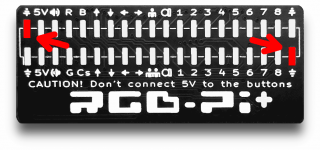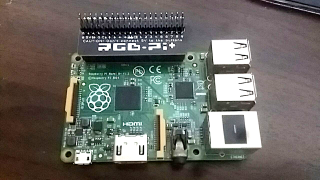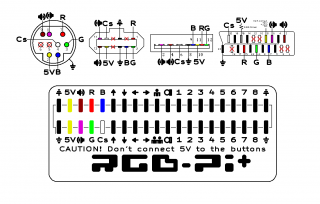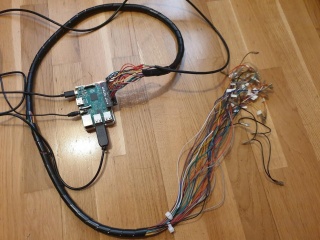Difference between revisions of "RGB-Pi PLUS Installation"
| Line 1: | Line 1: | ||
| − | '''Steps''' | + | '''VideoTutorials''' |
| + | |||
| + | |||
| + | English - https://www.youtube.com/watch?v=gGsKI9Mg9-Y | ||
| + | |||
| + | [[File:Tumb_p_en.png]] | ||
| + | |||
| + | |||
| + | Spanish - https://www.youtube.com/watch?v=rIW-G3tiPl0 | ||
| + | |||
| + | [[File:Tumb_p_es.png]] | ||
| + | |||
| + | |||
| + | '''Traditional Steps''' | ||
{| | {| | ||
Revision as of 16:43, 8 May 2021
VideoTutorials
English - https://www.youtube.com/watch?v=gGsKI9Mg9-Y
Spanish - https://www.youtube.com/watch?v=rIW-G3tiPl0
Traditional Steps
| 1. If you need to sold the male pins begin putting tin on thecontrary corners of the board and weld first this point to align the pin header, after you can continue welding the rest of contacts. |
| 2. Connect the board to te pi in this position, to the outside of the Pi |
| 3. Begin wiring the video pins,, you can use you favorite plug. |
| 4. Create a bundle of cables as seen in the following to be connected to buttons and monitor. |
| 5. That's all! For instructions on how to install RGB-Pi OS, please visit the corresponding section in this wiki. |




